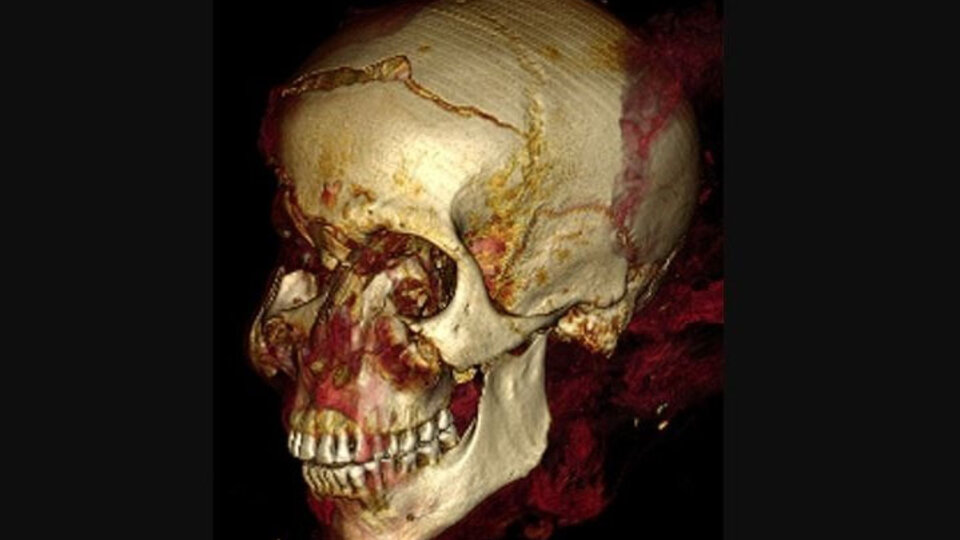
[ad_1]
With the help of a scanner, a group of scientists managed to establish the conditions under which the pharaoh died Seqenenra Taa II, who ruled Egypt about 3,500 years ago.
According to the study published this Wednesday by the magazine Frontiers of Medicine, the sovereign nicknamed “The brave” he was reportedly executed after being captured in action.
Seqenenre Taa II briefly ruled southern Egypt during the occupation of the country by the Hyskos, a foreign dynasty that held power throughout the kingdom for about a century (1650-1550 BC).
In his attempt to drive out the Hyskos, the pharaoh was killed. However, until now, researchers have not been able to establish the exact nature of his death, a fact that has been studied since 1880, when his mummy was first discovered and studied.
Now, a study by archaeologist Zahi Hawass and Cairo University radiology professor Sahar Saleem reveals, from three-dimensional images captured with a scanner, that the pharaoh was killed by his enemies during a “execution ceremony”. .
At the time of his death, according to investigators, Seqenenre Taa II had his hands tied, preventing him from defending himself against the attack. “This suggests that Seqenenre was really on the front lines with his soldiers risking his life to liberate Egypt.”said Saleem, who specializes in paleoradiology.
This technique uses medical imaging technologies to non-invasively study a cross-section of archaeological remains, including bodies.
The paleoradiology This can not only help determine the age of the person at the time of death, but also the gender and even the conditions under which they died.
The CT scan, for example, they suggested that the execution of Seqenenre Taa II was carried out by several assailants, version confirmed by scientists by studying five Hyskos weapons that corresponded to the king’s wounds.
“In a normal execution of a tied prisoner, one might assume that a single assailant is attacking, perhaps from different angles but not with different weapons,” Saleem added on this assumption. “Seqenenre’s death was more of a ceremonial execution,” he said.
The study also found that Seqenenre he was about 40 when he died, which provides the most accurate estimate to date.
In addition, the investigation revealed important details about the mummification of the body: embalmers used a sophisticated method to conceal wounds on the king’s head under a layer of material that works similarly to fillers used in modern plastic surgery.
Saleem and Hawass pioneered the use of CT scans to study New Kingdom pharaohs and warriors, including Hatshepsut, Tutankhamun, Ramses III, Thutmosis III, and Ramses II. However, Seqenenre, from the available evidence, appears to be the only one of this group to be on the front lines of the battlefield.
.
[ad_2]
Source link
 Naaju Breaking News, Live Updates, Latest Headlines, Viral News, Top Stories, Trending Topics, Videos
Naaju Breaking News, Live Updates, Latest Headlines, Viral News, Top Stories, Trending Topics, Videos